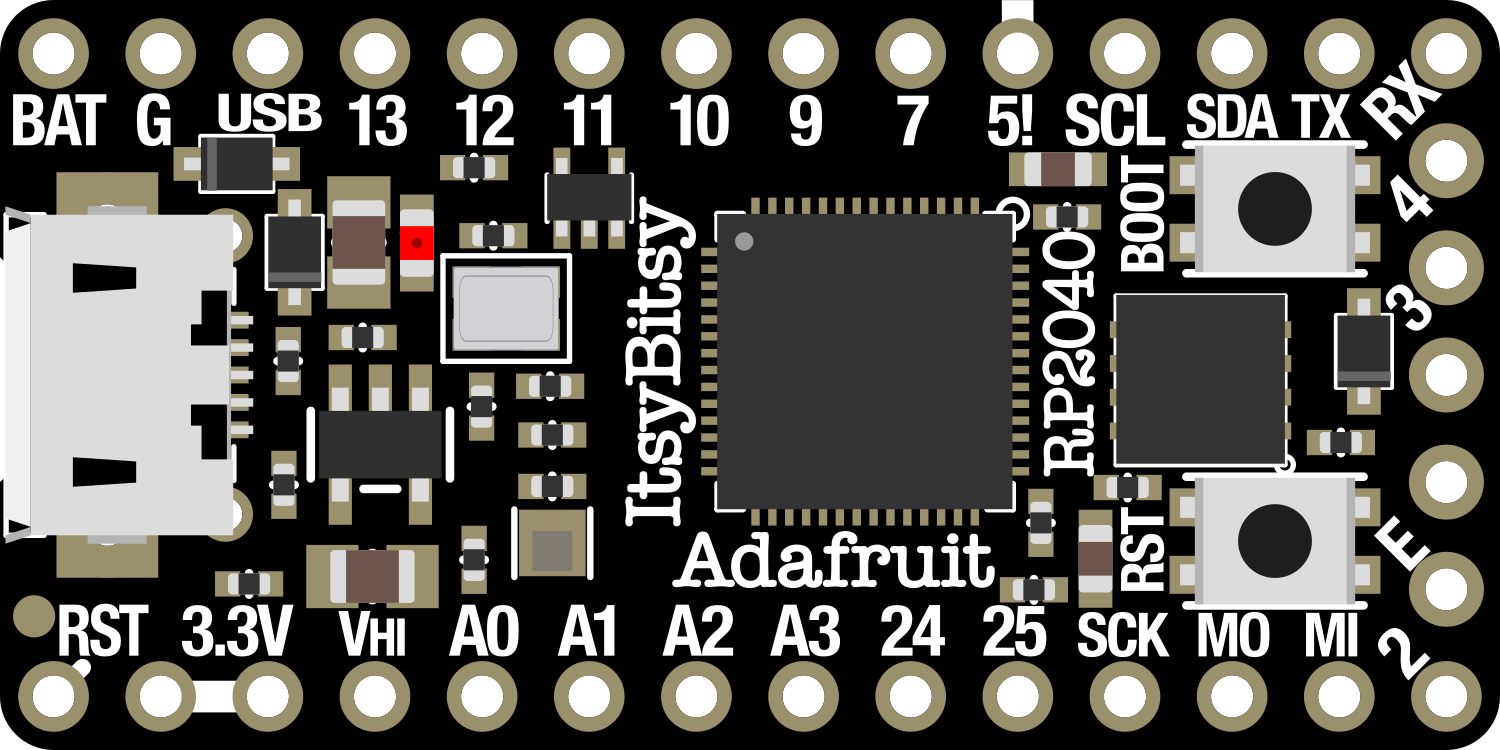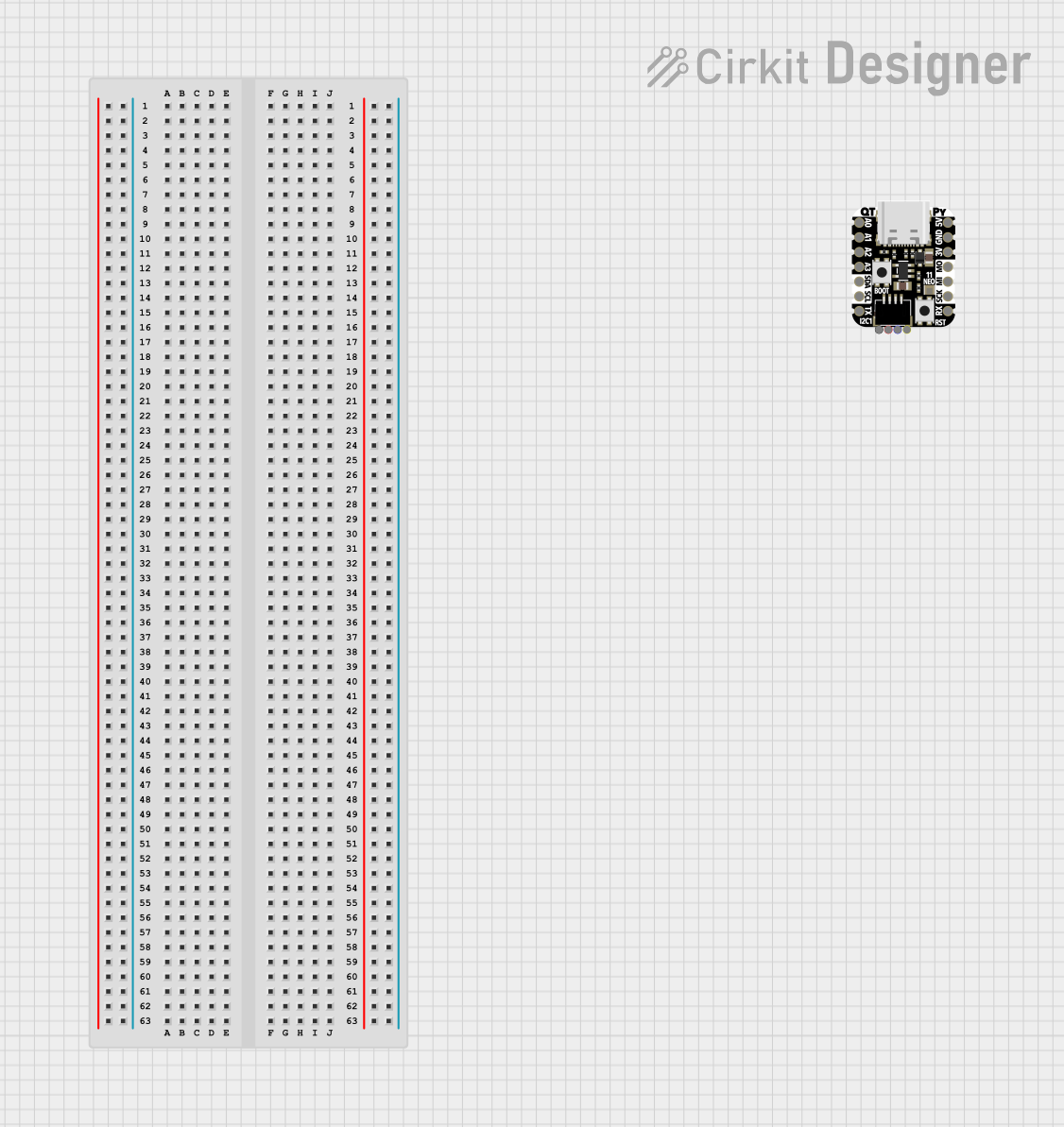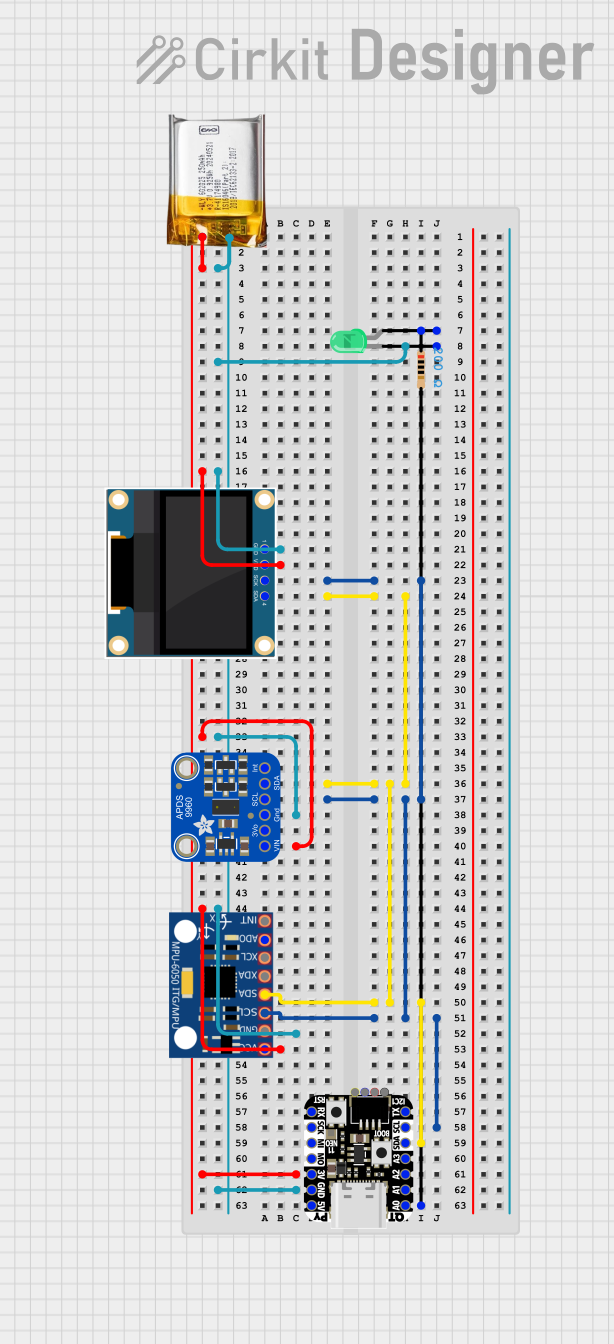
How to Use Adafruit ItsyBitsy RP2040: Examples, Pinouts, and Specs

 Design with Adafruit ItsyBitsy RP2040 in Cirkit Designer
Design with Adafruit ItsyBitsy RP2040 in Cirkit DesignerIntroduction
The Adafruit ItsyBitsy RP2040 is a small, powerful microcontroller board that harnesses the capabilities of the Raspberry Pi RP2040 chip. This board is designed for makers and hobbyists who need a compact, yet feature-rich, development platform for their projects. With its versatility, the ItsyBitsy RP2040 is ideal for applications in robotics, Internet of Things (IoT), wearable devices, and more.
Explore Projects Built with Adafruit ItsyBitsy RP2040

 Open Project in Cirkit Designer
Open Project in Cirkit Designer
 Open Project in Cirkit Designer
Open Project in Cirkit Designer
 Open Project in Cirkit Designer
Open Project in Cirkit Designer
 Open Project in Cirkit Designer
Open Project in Cirkit DesignerExplore Projects Built with Adafruit ItsyBitsy RP2040

 Open Project in Cirkit Designer
Open Project in Cirkit Designer
 Open Project in Cirkit Designer
Open Project in Cirkit Designer
 Open Project in Cirkit Designer
Open Project in Cirkit Designer
 Open Project in Cirkit Designer
Open Project in Cirkit DesignerTechnical Specifications
Key Technical Details
- Microcontroller: Raspberry Pi RP2040
- Clock Speed: Up to 133 MHz
- Flash Memory: 8 MB
- RAM: 264 KB
- GPIO Pins: 23 digital I/O pins
- Analog Inputs: 3 12-bit ADC channels
- PWM Outputs: 16 channels
- Voltage Supply: 5V via USB or 3.3V to 5V via VIN pin
- Logic Level: 3.3V
- Interfaces: UART, I2C, SPI
- USB: USB-C connector for power and data
- Dimensions: 36mm x 17.8mm x 4.7mm
Pin Configuration and Descriptions
| Pin Number | Name | Description |
|---|---|---|
| 1 | GND | Ground |
| 2 | VBUS | USB input voltage (5V) |
| 3 | 3V3 | 3.3V output from the onboard regulator |
| 4-7 | D0-D3 | General Purpose I/O pins, D0 can be used for UART RX |
| 8-9 | SDA/SCL | I2C Data/Clock pins |
| 10-12 | D4-D6 | General Purpose I/O pins, D5 can be used for UART TX |
| 13 | D7 | General Purpose I/O pin, can also be used for SPI SCK |
| 14-16 | D8-D10 | General Purpose I/O pins, D10 can be used for SPI CS |
| 17 | D11 | General Purpose I/O pin, can also be used for SPI MISO |
| 18 | D12 | General Purpose I/O pin, can also be used for SPI MOSI |
| 19-21 | D13-D15 | General Purpose I/O pins, D13 can be used for LED |
| 22-23 | A0-A1 | Analog Input pins, can also be used as digital I/O |
| 24 | A2 | Analog Input pin, can also be used as digital I/O, DAC output |
| 25 | VIN | Voltage input for the board, 3.3V to 5V |
Usage Instructions
Setting Up the ItsyBitsy RP2040
- Connect the ItsyBitsy RP2040 to your computer using a USB-C cable.
- Install the necessary drivers and board support package for the RP2040 in your Integrated Development Environment (IDE), such as the Arduino IDE or Thonny Python IDE.
- Select the Adafruit ItsyBitsy RP2040 from the list of available boards in your IDE.
Programming the ItsyBitsy RP2040
- The ItsyBitsy RP2040 can be programmed using C/C++ via the Arduino IDE or MicroPython/Python via Thonny or other Python IDEs.
- Ensure that you select the correct board and port before uploading your code.
Best Practices
- Always disconnect the ItsyBitsy RP2040 from power before making or altering connections.
- Use a current limiting resistor when connecting LEDs to GPIO pins.
- Avoid applying more than 3.3V to any of the I/O pins to prevent damage to the board.
Example Code for Arduino UNO
Here is a simple example of blinking an LED on pin D13 using the Arduino IDE:
// Define the LED pin
const int ledPin = 13;
void setup() {
// Initialize the LED pin as an output
pinMode(ledPin, OUTPUT);
}
void loop() {
// Turn the LED on
digitalWrite(ledPin, HIGH);
// Wait for one second
delay(1000);
// Turn the LED off
digitalWrite(ledPin, LOW);
// Wait for one second
delay(1000);
}
Troubleshooting and FAQs
Common Issues
- Board not recognized: Ensure that you have installed the correct drivers and selected the right board in your IDE.
- Code not uploading: Check the USB cable and port. Make sure the board is properly powered.
- I/O pin not working: Verify that the pin is not being used by another peripheral and that it's configured correctly in your code.
FAQs
Q: Can I power the ItsyBitsy RP2040 with a battery? A: Yes, you can power it with a battery connected to the VIN pin, provided the voltage is within the 3.3V to 5V range.
Q: Is the ItsyBitsy RP2040 compatible with Raspberry Pi accessories? A: No, it is not directly compatible with Raspberry Pi accessories as it has a different form factor and pinout.
Q: How do I reset the board? A: You can reset the board by briefly connecting the RST pin to the GND pin.
For further assistance, refer to the Adafruit ItsyBitsy RP2040 forums and community resources.